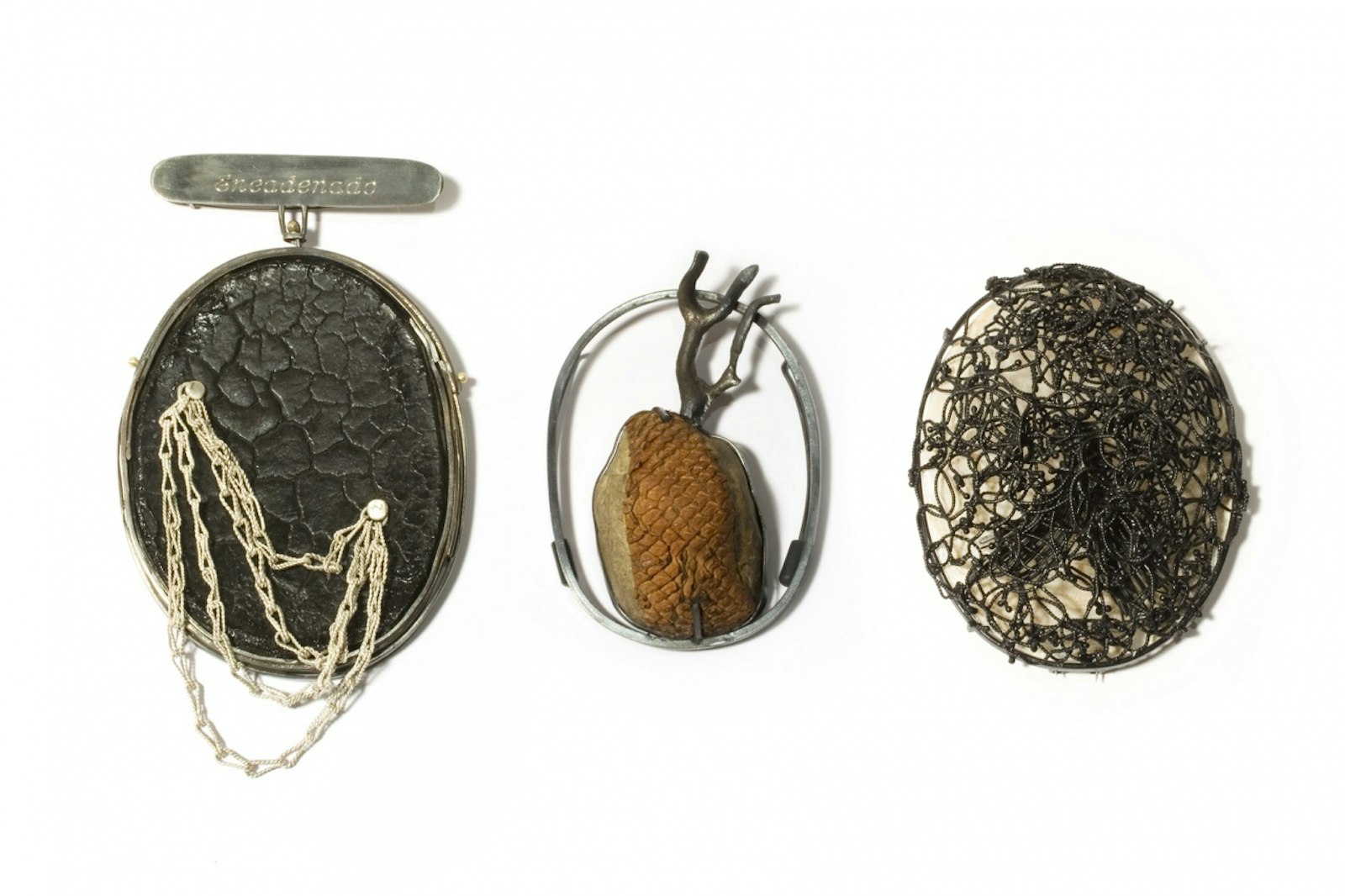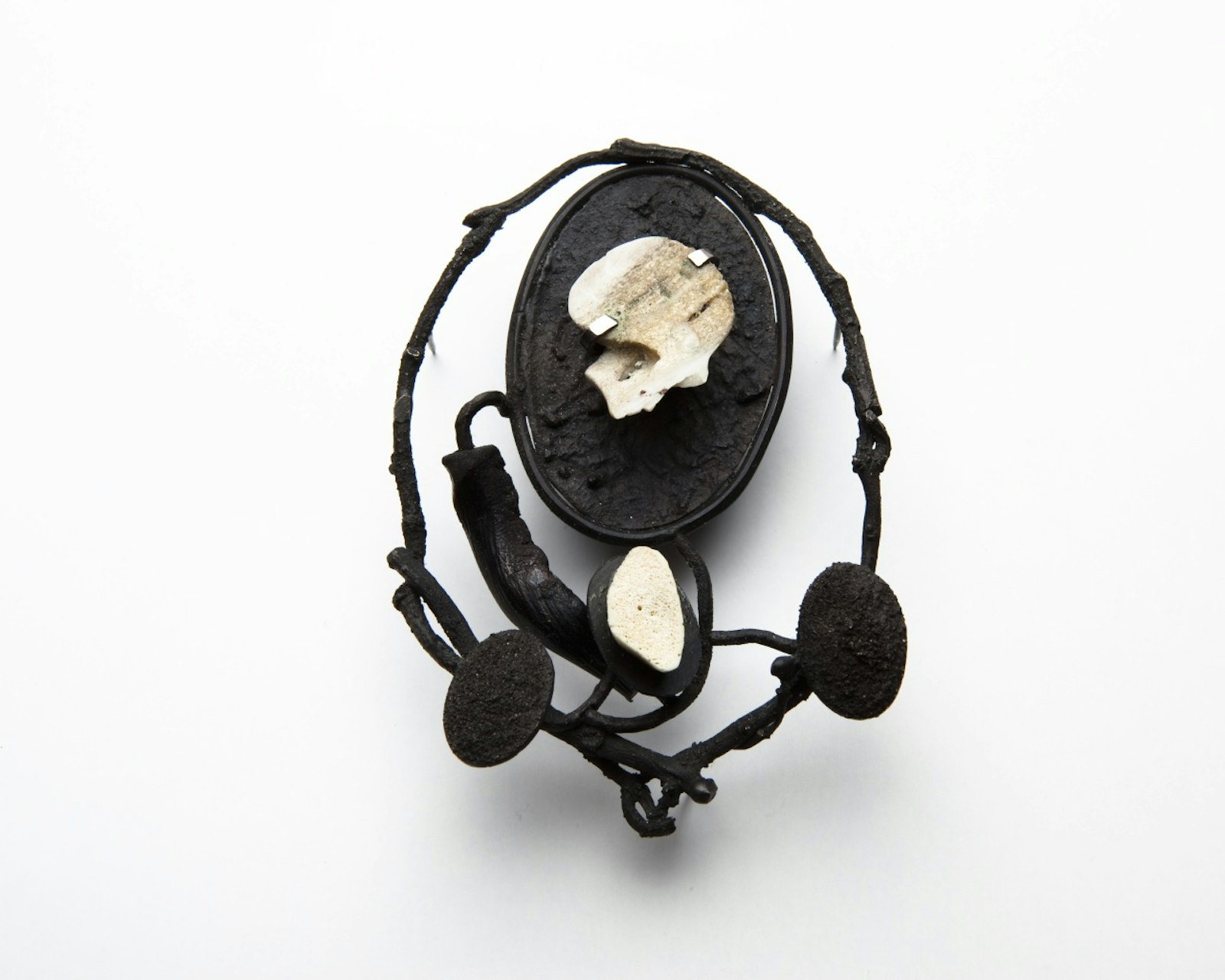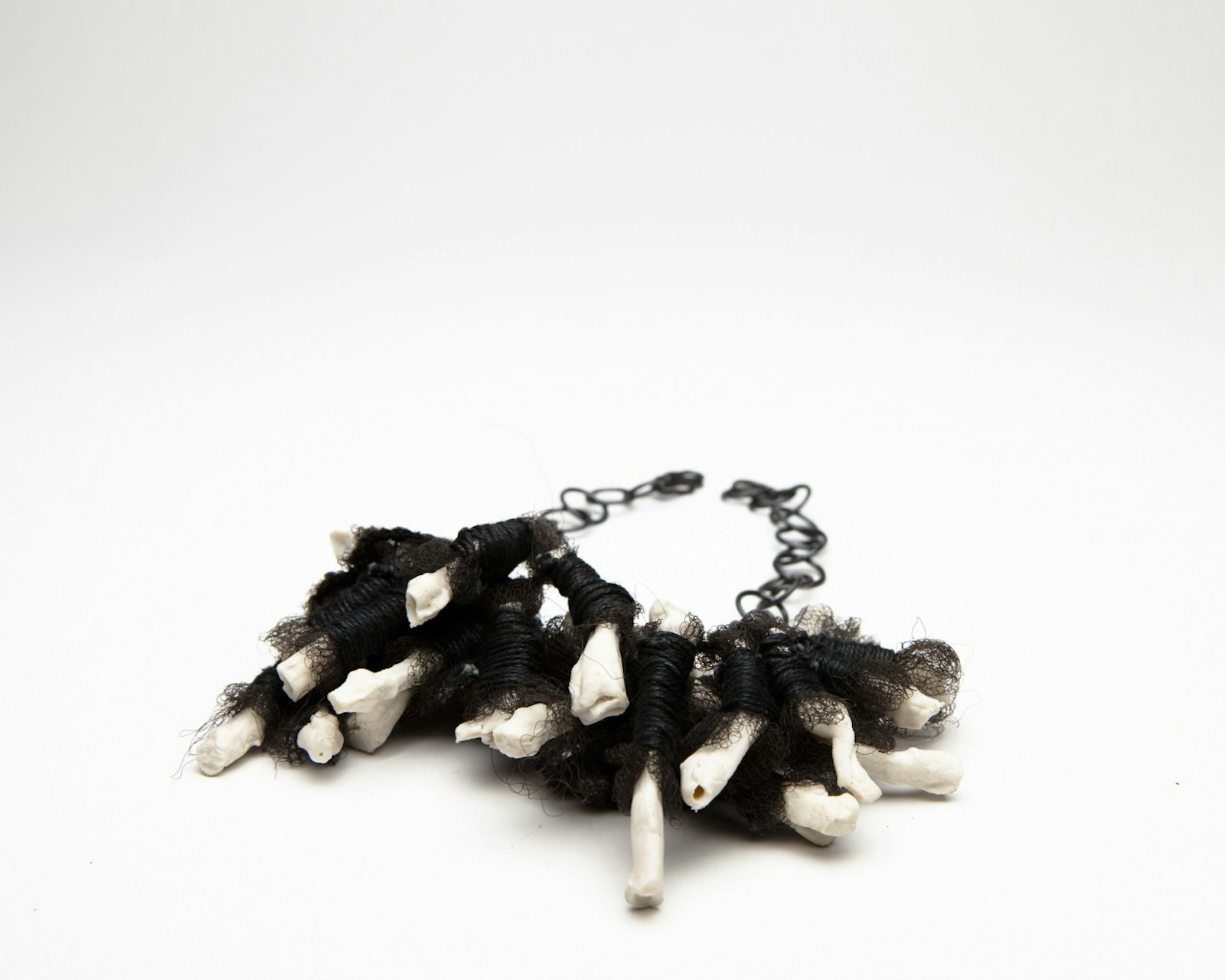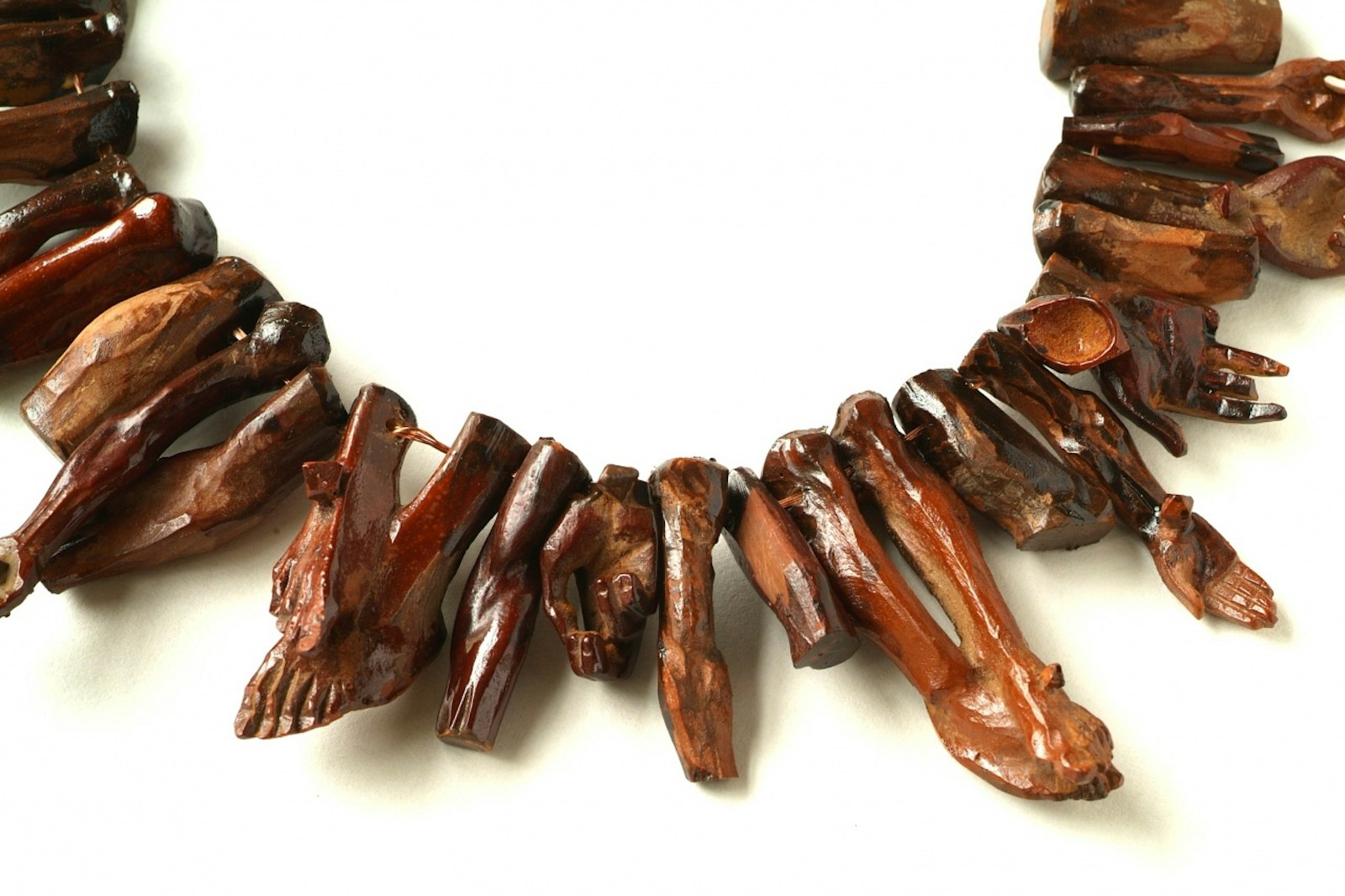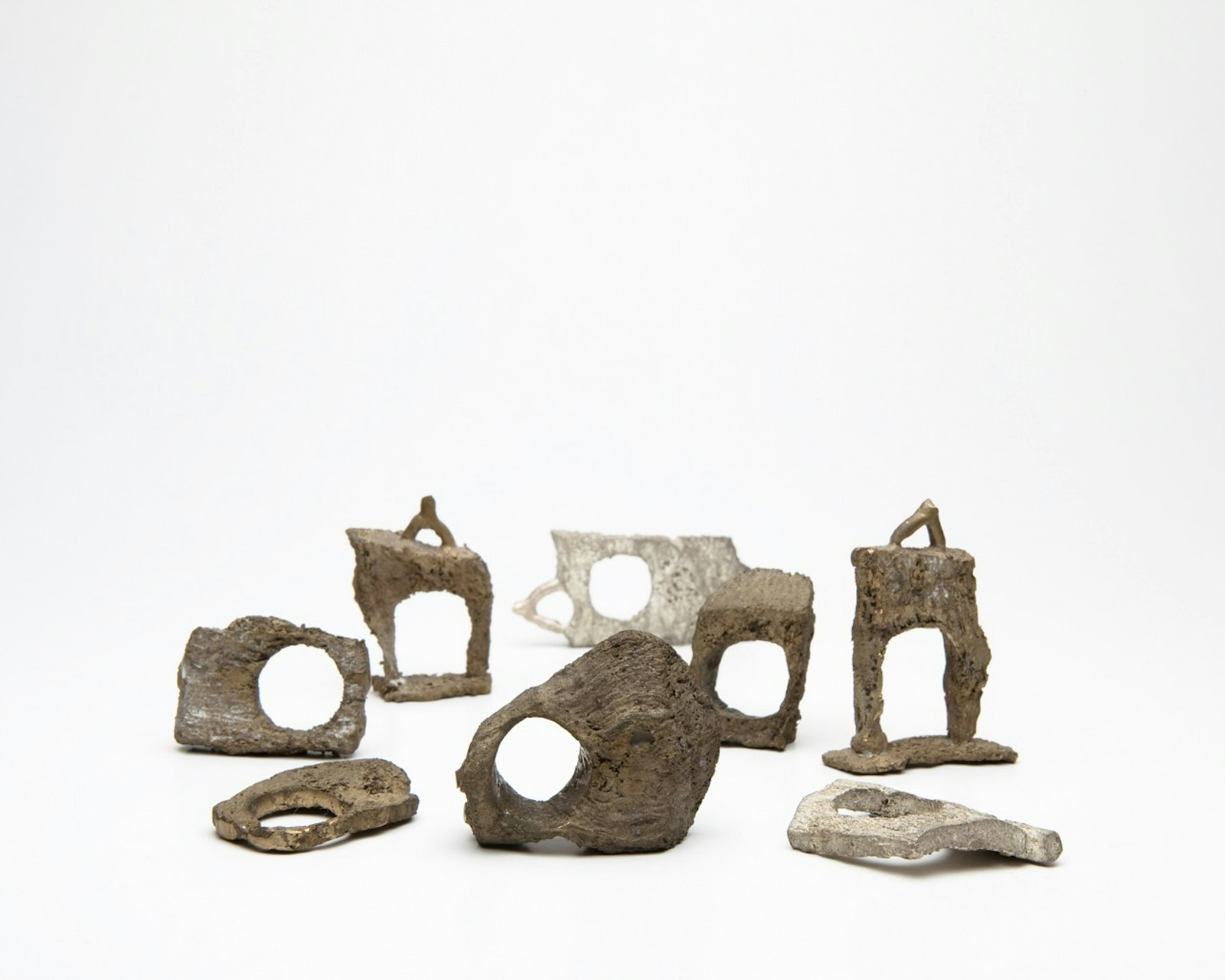de Velde
Jorge Manilla Navarrete
Born and raised in Mexico City, this young man came to Belgium in 2002 to study.
Before that, from 1994 to 1997, he followed drawing and sculpture classes at the San Carlos Academy in Mexico City, followed by Jewellery Design and Silversmithing at the Escuela de Diseño y Artesanías (INBA), also in Mexico City, between 1998 and 2002. The fact he ended up studying, living and working in Belgium was a coincidence, because Germany was his primary goal. But because of administrative reasons this proved impossible.
During a trip to Belgium, he discovered Ghent and thought it was a cool city. A few years later he took an entrance exam to follow sculpture classes at the Ghent Art Academy on the Bijloke University campus. He chose to do this in Dutch, although at that time he didn’t speak the language. However, he had already learned German in preparation for his intended studies in Germany, so he gave it a go and succeeded. However, the course wasn’t really what he was looking for. A discussion with Siegfried De Buck and Hendrik Byl convinced him to follow a Master in Jewellery Design at the Karel de Grote Hogeschool in Antwerp, from 2003 until 2006. The school asked him to forget all the techniques he had learned and to design his first jewellery from scratch. A difficult task, but he discovered the importance of exploration, and he learned to design from an abstract idea. He succeeded brilliantly.
Since 2007 he has taught jewellery design and silversmithing at the RHoK in Brussels. I visited Jorge in his 11th floor apartment on the Ghent Watersportbaan, overlooking the Lys River. He really appreciates Ghent. ‘There’s always something to do here, you can find everything, and it completely meets my expectations of living in a big city. Mexico City is completely chaotic, something you really notice in the traffic. But there too, something is always happening. Of course Ghent is no Mexico City, but it still pleases me’.
Jorge Manilla was religiously raised. He not only received a Catholic upbringing, but his Indian roots are also important to him. ‘In Mexico we worship the Holy Mary’, he tells me, ‘but the Holy Death also saturates our world. The Holy Death is often portrayed as the Virgin Mary, as an elegant lady’. On his website you can read the following statement : ‘In my work, I reach possible answers to questions that inquiring people seek throughout their lives. Religion, myth and spirituality determine the seminal character of my jewellery-objects. The syncretism of Indian and Catholic religions is translated into symbolically loaded objects, pregnant with meaning. Tiny, stylized birds in fragile white porcelain with brilliant silver halos may look like hummingbirds, and then again like portrayals of the Virgin Mary... The suffering Christ is also a major source of inspiration. The meeting of different materials in one work evokes a wide range of feelings.’
What is striking about his work is its strangeness. Jorge is not seeking to please or adorn. His jewellery is not only very close to sculpture, but also to our souls. We see the strangest materials used in a very serious way. Unlike decorative jewellery, made from non-precious materials, often gently mocking the traditional art of the silversmith, it remains serene. Moreover, the viewer or admirer is overwhelmed by the realization that a poignant symbolism lies hidden beneath the grim jewels. Objects that could be the relics or signs of another civilization, a melancholy culture in which death and life, Eros and Thanatos encounter each other, fascinate Jorge Manilla. The work he made for the Sting of Passion exhibition earlier this year (July 2009) in the Manchester Art Gallery is a good example. Twelve jewellery designers from all over Europe, and together with Jorge, from around the world, were asked to create a work inspired by a number of Pre-Raphaelite paintings. Jorge chose Hylas and the Nymphs by William Waterhouse (1849-1917), a fantastic painter who surpassed himself with this work.
The photograph does not do it justice. The painting’s seven nymphs are translated into seven brooches made from fragile white porous bone, while the (un)fortunate Hylas, who is pulled into the water by the nymphs, is a blackened silver object, upon which a perfectly halved skull is fixed. Death as a sacred fact plays an unmistakeable role in the work of Jorge. Viva la muerte !
Meanwhile, his religious beliefs have evolved. He is questioning himself and even exploring other forms of spirituality. Jorge Manilla Navarrete is a exceptionally worthy Young Talent, an asset to our community and our country.

